Property Reincarnations

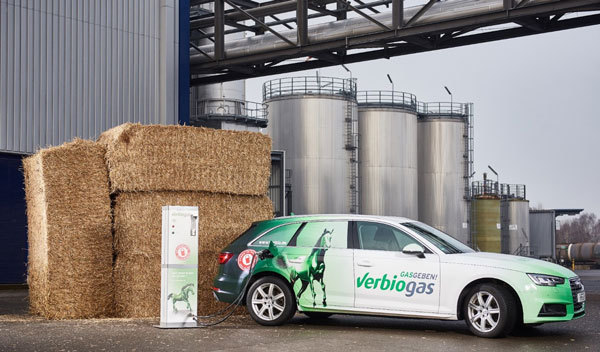
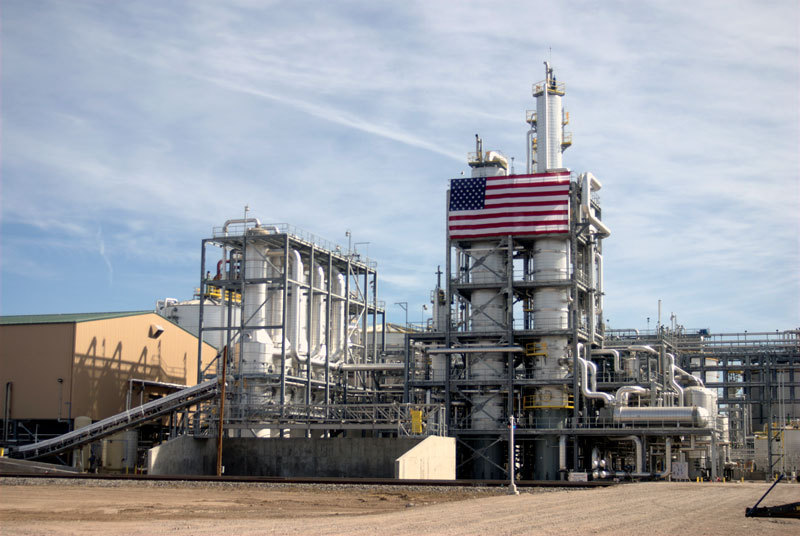
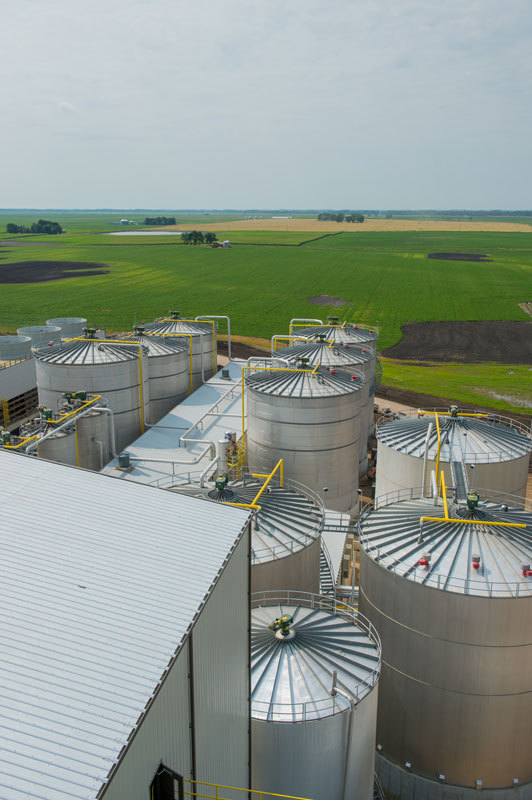
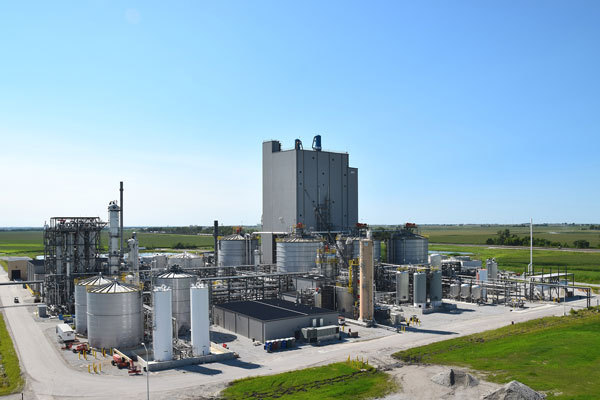
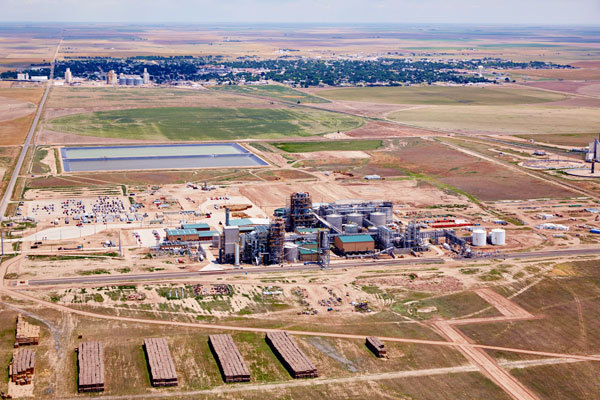
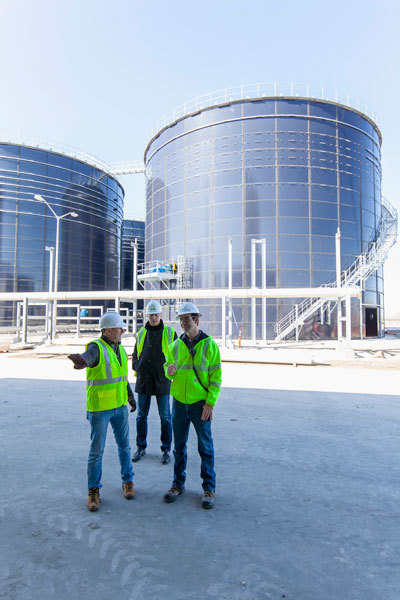
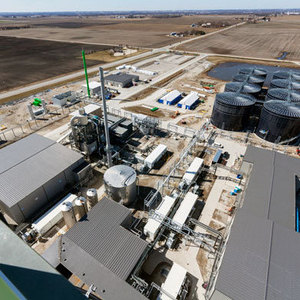
PHOTO: VERBIO
February 16, 2022
BY Katie Schroeder
A decade has passed since an immense surge of interest in cellulosic ethanol production swept through the Corn Belt, leading big-name companies down a path of daring research, investment and construction that collectively amounted to over a billion dollars of unrealized or deferred success.
Nationwide, nearly a dozen advanced ethanol projects emerged during cellulosic’s peak period of activity from about 2010 to 2015—different places, different tech, different feedstocks—but few operated as planned and many simply didn’t get done. The largest and most celebrated of the domestic efforts, a trio of competitors known as the “big three,” were Abengoa, DuPont and a joint venture between POET and Royal DSM called Project Liberty, which still remains.
Each of the three companies set out to convert corn stover—the plant’s stalk and leaves rather than its kernel—into high-value, D3 RIN-earning cellulosic ethanol. Abengoa built its plant in southwest Kansas while DuPont and POET-DSM sited their facilities in central and northern Iowa, respectively.
Construction on the landmark biorefineries—ranging from 20 to 30 MMgy—crested by late 2013 and all three sites were substantially complete by late 2014 or early 2015. While the plants were completed and in commissioning, fanfare ensued at grand openings that included high-profile CEOs, big-name politicians and even royalty, but none of the facilities performed as planned and, within three years, two of the three plants were shuttered and sold.
Today, only Project Liberty in Emmetsburg, Iowa, remains intact, albeit not in commercial operation. The other two facilities have new ownership, bevvies of new equipment and infrastructure on site, and vital new purpose. Here’s what’s become of cellulosic ethanol’s big three since they boldly broke ground, built and inspired an industry to think big a decade ago.
Renewable Diesel in Hugoton
In Hugoton, Kansas, sits a former cellulosic ethanol plant with a storied history. Initially created as part of an effort by Spain-based Abengoa to produce cellulosic ethanol, the plant is now being used for a different purpose—renewable diesel production—after twice changing hands in the past seven years.
After Abengoa laid off its Hugoton employees under financial difficulties in 2015, the refinery went into bankruptcy and was acquired by Synata Bio Inc. for $48.5 million a year later. The plant changed ownership again in early 2019 when Seaboard Energy (formerly High Plains Bioenergy) bought the facility from Synata for an undisclosed amount.
Seaboard Energy is one of several businesses under the Seaboard Corp. umbrella. Seaboard Energy President and CEO Gary Louis describes the parent corporation as a diversified agricultural and shipping company, but its connections to pork and chicken processing—the corporation owns Butterball—give context to its biofuel connections.
Louis says Seaboard decided to acquire the Hugoton plant from Synata due to the site’s existing base infrastructure, including electrical service, gas, rail, warehousing, control rooms, freshwater supply, wastewater treatment and almost 800 acres of land. In addition to attractive infrastructure, the site’s proximity to animal waste feedstocks, some sourced from Seaboard’s own assets in the area, made the investment appealing.
“It is in an ideal location for animal fats,” Louis says. “There’s a lot of beef and pork processing in the area. It is 40 miles from our pork processing plant in Guymon, Oklahoma. It is on the Cimarron Rail which feeds the BNSF Railroad, and the biggest reason we wanted to do renewable diesel was because it is a drop-in fuel and has allowed us to expand our marketing opportunities for our liquid renewable fuels business. It will also allow us to blend our biodiesel into a blended renewable fuel.”
Seaboard currently owns and operates two biodiesel plants: one in Guymon and one in Saint Joseph, Missouri. The company has been part of the liquid renewable fuels industry since it started producing biodiesel through toll processing it with their animal fats, first in Guymon, starting in 2008, and later in Saint Joseph, starting in 2016. The Hugoton plant will be the first to produce renewable diesel with a nameplate capacity of 85 MMgy, considerably more volume than the 25 MMgy cellulosic ethanol plant that stood there previously. The plant is not yet operational and still in commissioning, according to Louis.
Seaboard was able to utilize support infrastructure on site, but the new plant’s feedstock pretreatment units, hydrogen plant and renewable diesel processing units were built new. “The primary process facilities required to convert fats and oils into renewable diesel were constructed as greenfield projects,” Louis explains. “A lot of people think we went in and changed the process to make renewable diesel, we did not, we went in and used the existing infrastructure to support a greenfield renewable diesel plant.”
Emmetsburg Being Used for R&D
In many ways, ethanol giant POET and Dutch company Royal DSM led the push to create cellulosic ethanol from corn stover. Together, they created the 20 MMgy Project Liberty, which came online in September 2014 in Emmetsburg.
The plant successfully converted corn stover, more specifically corn cobs, leaves, husks and stalks, and even sold cellulosic ethanol from the plant into the market, despite having to overcome bottlenecks in feedstock pretreatment.
POET-DSM decided to pause production in 2019, citing changes in the renewable fuel standard that negatively impacted the market demand for cellulosic ethanol. Specifically, company officials said, EPA manipulated RIN prices, continuously set renewable volume obligation (RVO) levels lower than they should have been, blocked new cellulosic pathways and granted undeserving small refinery exemptions. “The EPA has effectively cut the incentive to blend cellulosic biofuel from nearly $3 to as low as 59 cents per the D3 RIN value,” the company stated in late 2019.
Frustrated with the EPA’s management of the RFS, the company announced that Project Liberty would shift away from cellulosic ethanol to focus primarily on research and development, with the goal of improving mechanical reliability and creating additional technological efficiencies. As part of the effort, POET-DSM said the facility would use biomass stored on site, or already under contract, and would cease purchasing additional baled stover. Since ceasing commercial operation, POET has not disclosed how the idled facility is being utilized and maintained, but has previously indicated that resuming production is possible.
RNG Production in Nevada, Iowa
The third of the Big Three corn stover ethanol plants to be completed was built by DuPont in Nevada, Iowa. The plant had its grand opening in October 2015 but was still in the commissioning process in mid-2017. It had the capacity to produce 30 MMgy of cellulosic ethanol at full capacity, however DuPont decided to exit cellulosic fuel and sold the plant to Verbio North America Holdings in 2018, having never reached real operability.
Instead of producing cellulosic ethanol, Verbio plans to produce renewable natural gas (RNG) and corn-based ethanol at the location. The plant’s RNG production began in December 2021, initially producing an RNG volume that is equivalent to 7 MMgy of ethanol. After an expansion that is already underway, the company will have the capacity to convert 100,000 metric tons of corn straw into RNG. And by the end of 2022, Verbio plans to expand the biorefinery further with the introduction of ethanol production integrated with biogas.
Greg Northrup, president of Verbio North America, explains that the biorefinery will integrate the ethanol and RNG production processes in Phase II. They plan to produce 60 MMgy of corn-based ethanol starting in October. The stillage left over from producing ethanol will be used to make an additional 12 million ethanol gallons equivalent of RNG, bringing their total to 19 million EGE.
“We end up with better synergy, better economics, better design and operating capabilities because we are integrating the two operations together; it makes us much more sustainable ultimately,” Northrup said.
Greg Faith, president and general manager of Verbio Nevada LLC, describes what this sustainability looks like in day-to-day operations. “Where they integrate really nicely is the energy we make from some of the renewable natural gas we make can be used to heat our boilers,” he says, adding that the use of biogas allows the plant to have a much lower carbon intensity score.
Significant infrastructure changes were made to the plant during its transition. Eighty percent of the plant now has newly constructed assets, however, Verbio was able to use 20% of the existing assets to produce corn-based ethanol. Faith explains that anerobic digestion and gas cleaning were two of the main assets which needed to be added to produce RNG. Although Verbio could not utilize all the cellulosic ethanol equipment, they were drawn to the Nevada plant for other reasons.
“What is more important about the site for us is … we sit right on top of a natural gas pipeline that’s operated by Alliant Energy,” Northrup says. “If we’re producing renewable natural gas, access to the interstate pipeline gas supply system is critical. And so, with the pipeline being right at our front door it [is] a truly important asset for us as it relates to infrastructure.”
He continues, “The other thing that was beneficial to us along with everything else, there is a 25-megawatt substation that was already part of the construction process. We use a lot of power, and so that was an investment that we didn’t have to make because of the purchase.”
The Nevada biorefinery is the first industrial-scale RNG facility of its kind in the United States. Faith explains that the technology of converting corn stover into RNG is a proven technology developed by Verbio in Germany over the last ten years. “I think that’s the exciting part; this is a new market in the United States and a proven technology,” he says.
“We’re very fortunate,” Northrup agrees. “The technology and operating capabilities we have are just very exciting and we’re happy to bring that to the U.S. We’re looking forward to really great growth here and increasing employment as part of the process and helping growers with another revenue stream for their agricultural residue.”
The biorefinery will utilize 75,000 to 100,000 tons of corn stover in the first phase of the RNG production process. Northrop explained that the Nevada plant’s location in the middle of the Corn Belt was crucial for access to the feedstock needed for RNG production.
Faith explains that they work to not strip the soil of its nutrients when removing crop residue for use as feedstock. They address this issue by applying humus fertilizer produced at the biorefinery.
“It’s really up to the farmer, because some of our farmers to the north would rather we take it and not give the humus back,” Faith says. “Because north of us we have quite a few pig farmers that would choose to put manure on their ground, so it depends.” Faith says Verbio and Iowa State University are actively talking to area farmers about the benefits of removing some of their corn stover from their fields and reapplying nutrients.
Reliability from the government is important to the biofuels industry to be able to make good investments, Northrup explains. “When I spend millions of dollars on a facility as I’ve done in Nevada, I don’t make those decisions lightly and I expect a fair return on that investment [while] we’re trying to help the United States maintain energy independence with renewable fuels as part of the mix,” he says. “So, to be successful doing that, these are long-term projects that require long-term commitment, and we need a government that gives us long-term predictability in the standards that we’re trying to achieve.”
The cellulosic ethanol industry was hampered by technology issues, Northrup says. However, he believes that the ethanol industry—and to a lesser extent the RNG industry—need predictability from Washington to thrive.
“We need consistent, reliable predictions of what can we expect as an industry from Washington,” he says. “We haven’t had that the last four to five years, unfortunately.”
Author: Katie Schroeder
Contact: katie.schroeder@bbiinternational.com
Introduction by Tom Bryan
Advertisement
Advertisement
Advertisement
Advertisement
Related Stories
CoBank latest quarterly research report highlights current challenges facing the biobased diesel industry. The report cites policy uncertainty and trade disruptions due to tariff disputes as factors impacting biofuel producers.
The U.S. EIA on April 15 released its Annual Energy Outlook 2025, which includes energy trend projections through 2050. The U.S. DOE, however, is cautioning that the forecasts do not reflect the Trump administration’s energy policy changes.
The USDA on April 14 announced the cancellation of its Partnerships for Climate-Smart Commodities program. Select projects that meet certain requirements may continue under a new Advancing Markets for Producers initiative.
The Michigan Advanced Biofuels Coalition and Green Marine are partnering to accelerating adoption of sustainable biofuels to improve air quality and reduce GHG emissions in Michigan and across the Great Lakes and St. Lawrence Seaway.
The USDA reduced its outlook for 2024-’25 soybean oil use in biofuel production in its latest World Agricultural Supply and Demand Estimates report, released April 10. The outlook for soybean oil pricing was revised up.
Upcoming Events










